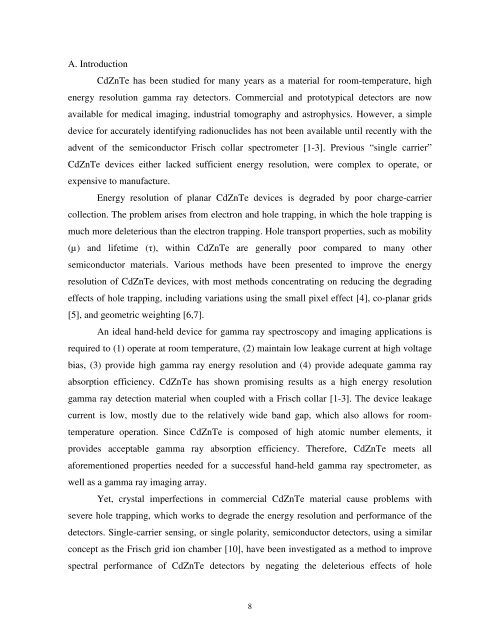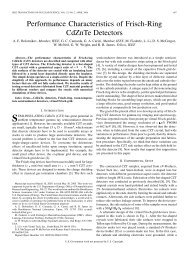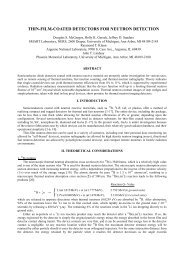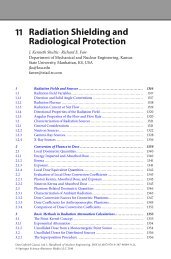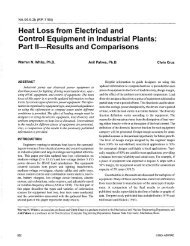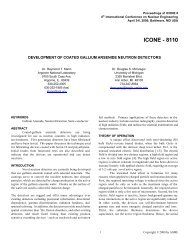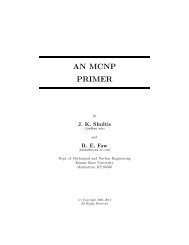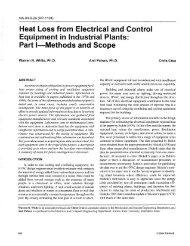2006 DOE NEER Final Report - Kansas State University Mechanical ...
2006 DOE NEER Final Report - Kansas State University Mechanical ...
2006 DOE NEER Final Report - Kansas State University Mechanical ...
Create successful ePaper yourself
Turn your PDF publications into a flip-book with our unique Google optimized e-Paper software.
A. Introduction<br />
CdZnTe has been studied for many years as a material for room-temperature, high<br />
energy resolution gamma ray detectors. Commercial and prototypical detectors are now<br />
available for medical imaging, industrial tomography and astrophysics. However, a simple<br />
device for accurately identifying radionuclides has not been available until recently with the<br />
advent of the semiconductor Frisch collar spectrometer [1-3]. Previous “single carrier”<br />
CdZnTe devices either lacked sufficient energy resolution, were complex to operate, or<br />
expensive to manufacture.<br />
Energy resolution of planar CdZnTe devices is degraded by poor charge-carrier<br />
collection. The problem arises from electron and hole trapping, in which the hole trapping is<br />
much more deleterious than the electron trapping. Hole transport properties, such as mobility<br />
(µ) and lifetime (τ), within CdZnTe are generally poor compared to many other<br />
semiconductor materials. Various methods have been presented to improve the energy<br />
resolution of CdZnTe devices, with most methods concentrating on reducing the degrading<br />
effects of hole trapping, including variations using the small pixel effect [4], co-planar grids<br />
[5], and geometric weighting [6,7].<br />
An ideal hand-held device for gamma ray spectroscopy and imaging applications is<br />
required to (1) operate at room temperature, (2) maintain low leakage current at high voltage<br />
bias, (3) provide high gamma ray energy resolution and (4) provide adequate gamma ray<br />
absorption efficiency. CdZnTe has shown promising results as a high energy resolution<br />
gamma ray detection material when coupled with a Frisch collar [1-3]. The device leakage<br />
current is low, mostly due to the relatively wide band gap, which also allows for roomtemperature<br />
operation. Since CdZnTe is composed of high atomic number elements, it<br />
provides acceptable gamma ray absorption efficiency. Therefore, CdZnTe meets all<br />
aforementioned properties needed for a successful hand-held gamma ray spectrometer, as<br />
well as a gamma ray imaging array.<br />
Yet, crystal imperfections in commercial CdZnTe material cause problems with<br />
severe hole trapping, which works to degrade the energy resolution and performance of the<br />
detectors. Single-carrier sensing, or single polarity, semiconductor detectors, using a similar<br />
concept as the Frisch grid ion chamber [10], have been investigated as a method to improve<br />
spectral performance of CdZnTe detectors by negating the deleterious effects of hole<br />
8


